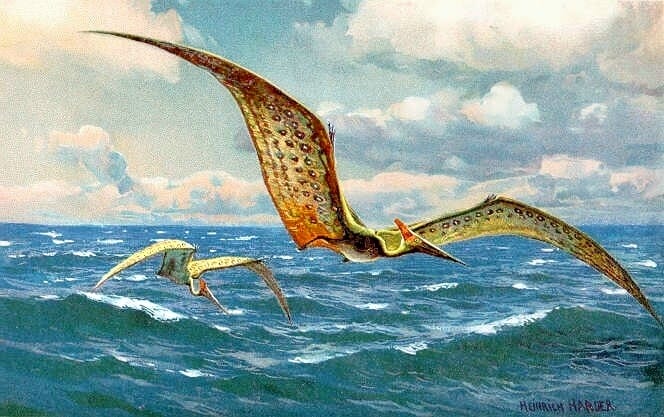Science journalist Tim Wall has covered the flying reptile research of SMU’s Timothy S. Myers on his popular Discovery News Online blog. Wall’s March 2 entry aptly warns “Don’t mess with Texas Pterosaurs!”
Myers identified fossilized bones discovered in Texas from a flying reptile that died 89 million years ago. The bones may be the world’s earliest occurrence of the prehistoric creature known as Pteranodon, Myers says.
Pteranodon was a type of pterosaur that lived about the same time as some dinosaurs, about 100 million to 65 million years ago. The only reptiles to dominate the ancient skies, pterosaurs had broad leathery wings and slim torsos.
The specimen identified by Myers had a wing span between 12 and 13 feet, or 3.6 to 4 meters. It was discovered in a rock unit that dates to early in the Late Cretaceous.
EXCERPT:
By Tim Wall
Discovery News Online
Don’t mess with Texas Pterosaurs! They are the oldest yet found in North America. One recently found specimen may even be the oldest Pteranodon in the world.The mystery flying reptile a type of pterosaur, took a final plunge 89 million years ago into the waters of the inland sea that once covered the central United States. It sank to the bottom, fossilized, and lay there until amateur fossil hunter Gary Byrd found the ancient aviator’s bones. They were uncovered during the excavation of a culvert in a new subdivision north of Dallas.
Pterosaur Windsurfed Across Surface of Prehistoric Seas
“I found a couple parts of a fish, and then when I saw these my initial thought was that they weren’t fish,” Byrd, a roofing contractor by day, said in a Southern Methodist University press release. “I kind of knew it was something different — a birdlike thing. It’s very rare you find those thin, long bones.”Byrd already has a species of duckbill dinosaur, Protohadros byrdi, named after him in 1994. He donated the fossils to Southern Methodist University’s Shuler Museum of Paleontology.
At the museum, Timothy Myers identified the bones as belonging to the left wing of a pterosaur, most likely a Pteranodon.
New Dino-Eating Pterosaur Evolved in Unusual Way
“If it wasn’t crushed so badly, it would be possible to determine if it really is Pteranodon,” Myers said in a SMU press release. “These bones are easily flattened. They are hollow inside, because they have to be lightweight to allow a pterosaur to fly. So they compress like a pancake as they’re embedded in layers of rock.”



